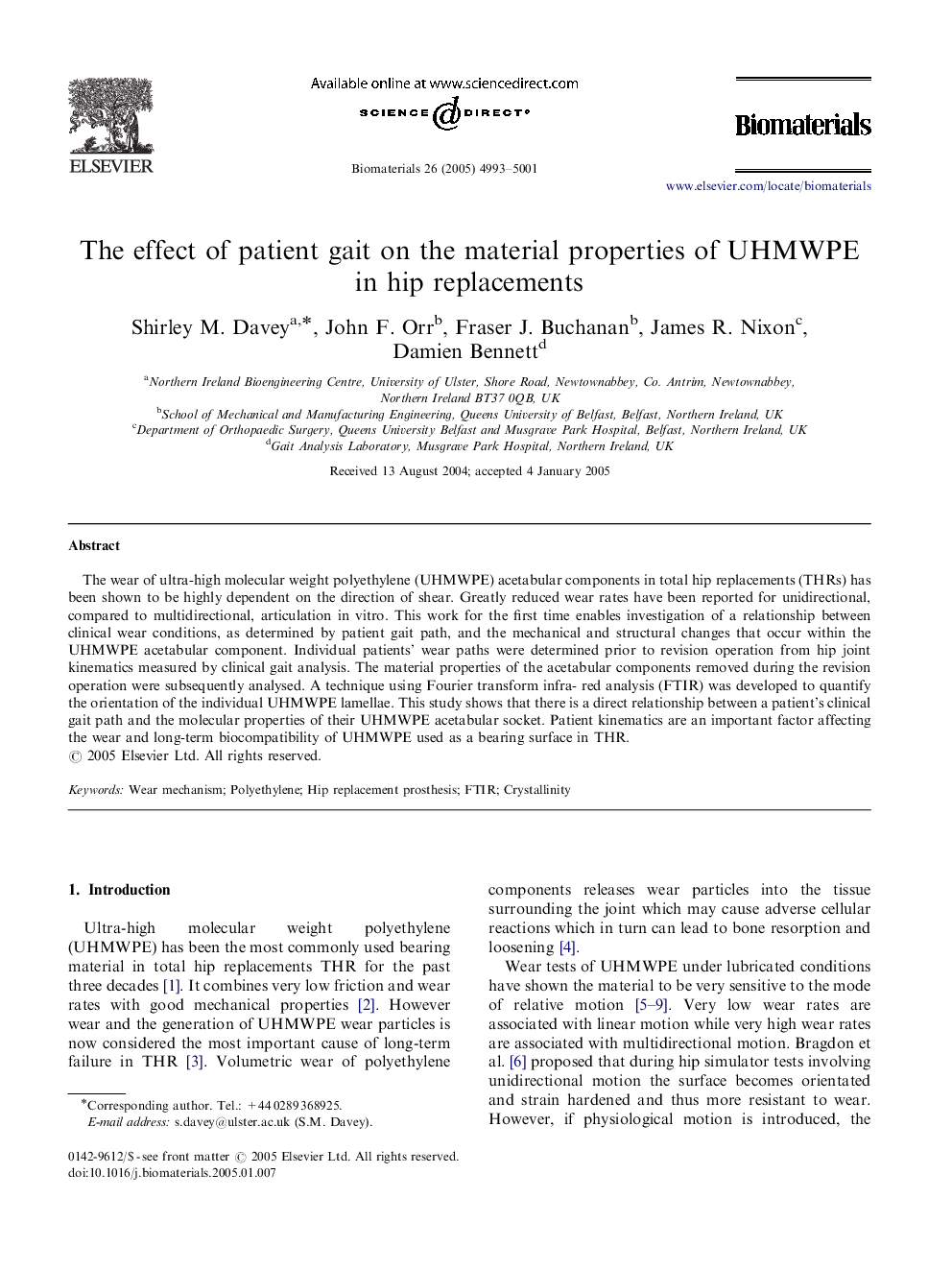| Article ID | Journal | Published Year | Pages | File Type |
|---|---|---|---|---|
| 12068 | Biomaterials | 2005 | 9 Pages |
The wear of ultra-high molecular weight polyethylene (UHMWPE) acetabular components in total hip replacements (THRs) has been shown to be highly dependent on the direction of shear. Greatly reduced wear rates have been reported for unidirectional, compared to multidirectional, articulation in vitro. This work for the first time enables investigation of a relationship between clinical wear conditions, as determined by patient gait path, and the mechanical and structural changes that occur within the UHMWPE acetabular component. Individual patients’ wear paths were determined prior to revision operation from hip joint kinematics measured by clinical gait analysis. The material properties of the acetabular components removed during the revision operation were subsequently analysed. A technique using Fourier transform infra- red analysis (FTIR) was developed to quantify the orientation of the individual UHMWPE lamellae. This study shows that there is a direct relationship between a patient's clinical gait path and the molecular properties of their UHMWPE acetabular socket. Patient kinematics are an important factor affecting the wear and long-term biocompatibility of UHMWPE used as a bearing surface in THR.
